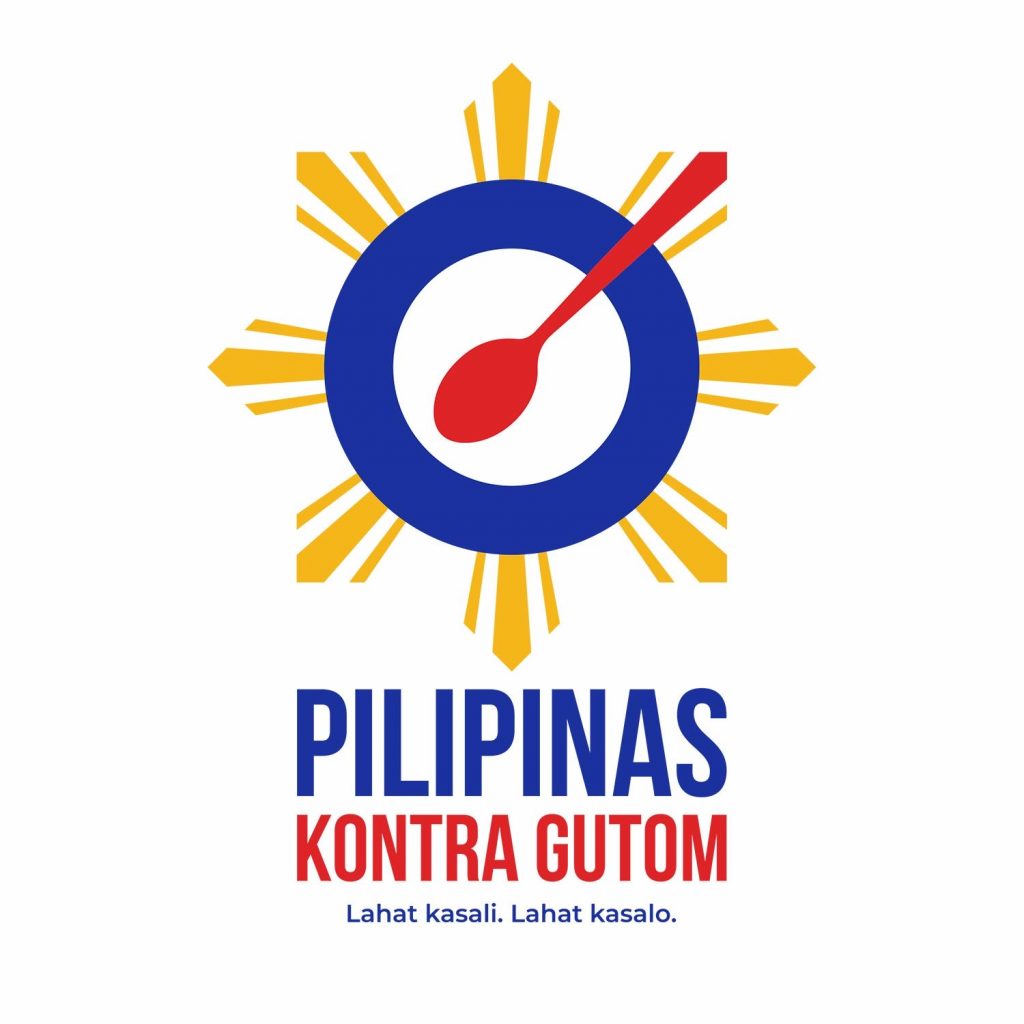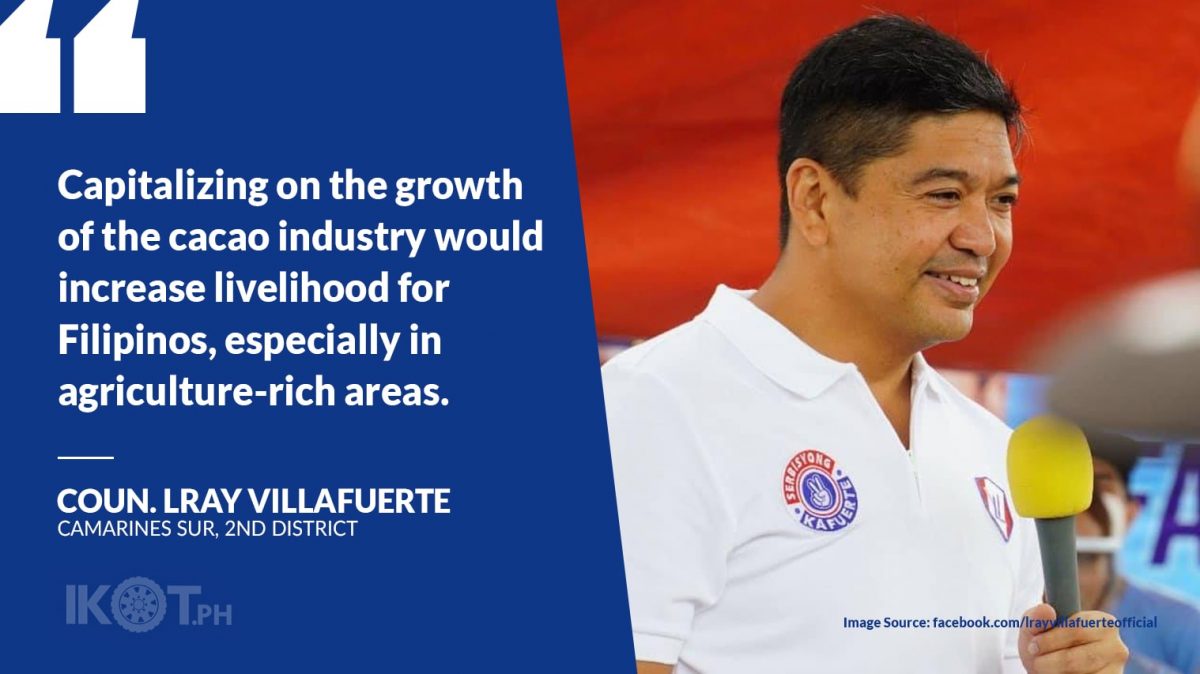Camarines Sur Representative LRay Villafuerte has proposed the establishment of a national program to fast-track the development of the cacao industry with an eye on planting one million trees in the Davao region and other parts of Mindanao.
Villafuerte said House Bill (HB) No. 1771 will support the goal of the Department of Agriculture (DA) of raising cacao production to 100,000 metric tons (MT) by 2022 to transform the Philippines into a key player in the global market.
Southern Mindanao is the country’s largest cacao-producing region with nearly 4,000 hectares dedicated to the crop.
The Camarines Sur legislator called for the swift approval of HB 1771 following the signing by President Rodrigo Duterte of a law declaring Davao City as the Chocolate Capital of the Philippines and the Davao Region as the Cacao Capital of the country.
HB 1771 remains pending before the House agriculture and food committee.
“Capitalizing on the growth of the cacao industry would increase livelihood for Filipinos, especially in agriculture-rich areas,” Villafuerte said in his bill.
He said using a mere 100,000 hectares for intercropping cacao with coconut trees would potentially create 1,000 jobs for Mindanao residents and more options for coconut farmers.
Villafuerte said the Philippines should capitalize on the increasing global demand for cacao, which is mostly grown in the Davao Region, and should be able to meet domestic requirements to reduce importation costs for local chocolate producers.
“The climate and fertile soil in the Philippines is well suited for growing cacao. Yet, the current state of the cocoa business is a disappointment to the crop’s historic roots. The homegrown cacao industry has deteriorated into small to medium-scale enterprises. As a result, local production is declining,” Villafuerte said when he filed his bill in 2019.
According to the DA, the increasing global demand for cacao is spurred by various factors: Rising awareness of its health benefits, expanding applications in food beverage, cosmetics, and medicine, and an increasing disposable income of the middle class.
In his bill, Villafuerte noted that the Philippines now makes up for the dwindling domestic supply of cacao by importing large amounts annually, which is lamentable given that the crop could be a major export product for the country.
When he filed his bill two years ago, Villafuerte said the country produces 10,000 to 12,000 metric tons (MT) of dried cacao beans, enough to make the country the 18th largest cacao producer worldwide, but not enough to secure the local demand of 30,000 MT annually.
“With production unable to keep up with demand, international prices for cacao beans are steadily rising. This makes importing cacao products costlier unless we can supply our own,” he said.
“The climate and fertile soil in the Philippines is well suited for growing cacao. Yet, the current state of cocoa business is a disappointment to the crop’s historic roots.”
Southern Mindanao is the country’s largest cacao-producing region with nearly 4,000 hectares dedicated to the crop, Villafuerte said.
Although the country’s contribution at present to the global market is relatively small, the Philippines already supplies cacao to the United States, Singapore, New Zealand, and Europe.
Chocolate from Philippine cacao beans is used by international brands such as Mars, M&M’s, and Barry Callebaut.
According to Department of Agriculture (DA) data, cacao is also grown in some parts of Luzon (llocos, Bulacan, Laguna, CamSur and Camarines Norte) and the Visayas (lloilo, Bohol and Negros Occidental).
The DA plans to improve cacao farmers’ access to fertilizer and cacao seeds in Mindanao and pre-existing regions and has promised to improve the flow and quality of extension service to cacao farmers to hasten the process and produce high-quality products, according to Villafuerte when he filed HB 1771.
HB 1771 seeks to implement a national program for the education and training of stakeholders in the cacao industry; and collection of relevant research, scientific studies, and market strategies for the proliferation of the local cacao industry.
Villafuerte’s bill calls for the creation of the National Cacao Development Council, which shall be composed of the DA Undersecretary in Charges of Crops, and the following members and agencies: High-Value Crops Development Program Head; DA-Bureau of Agricultural Research; Department of Science and Technology (DOST); Department of Trade and Industry (DTI); National Economic and Development Authority (NEDA); one (1) representative from the group of cacao traders; another one (1) representing the group of cacao processors; and one (1) more representing the group of cacao growers.


